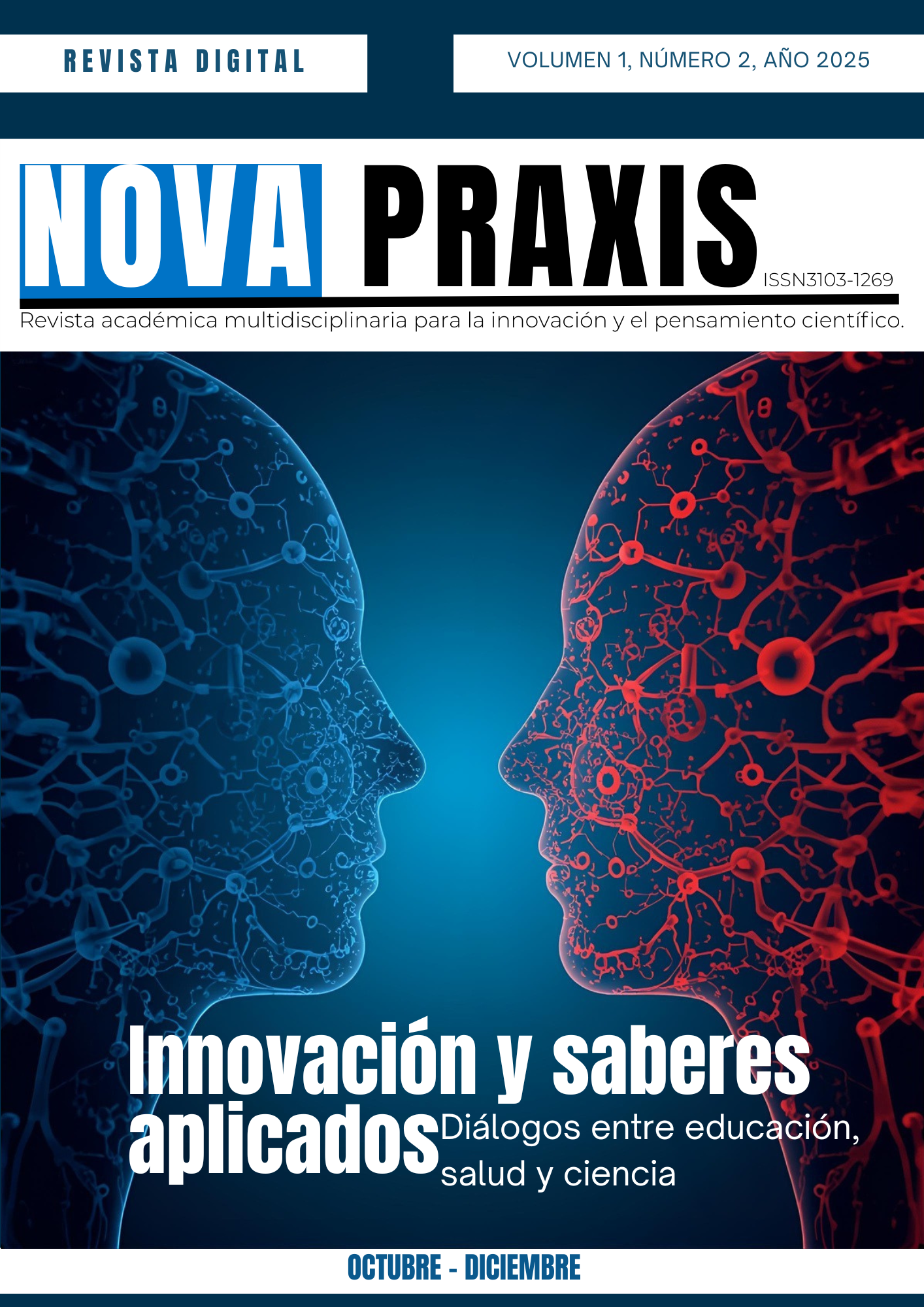Eficacia de intervenciones farmacológicas y no farmacológicas en el manejo del vértigo periférico y central en adultos: revisión sistemática
Palabras clave:
vértigo central, vértigo periférico, tratamiento farmacológico, tratamiento no farmacológicoResumen
Introducción: El vértigo, de origen periférico o central, representa un desafío clínico que afecta significativamente la calidad de vida de millones de adultos alrededor del mundo, generando mareos, desequilibrio, náuseas y riesgo de caídas. Objetivo: Evaluar la evidencia científica disponible sobre la eficacia de las intervenciones farmacológicas y no farmacológicas en el tratamiento del vértigo periférico y central en población adulta. Metodología: Se realizó una revisión sistemática, siguiendo la metodología PRISMA. Como fuentes de información se tomaron publicaciones de los últimos 5 años, en bases de datos como Pubmed, Scielo, Scopus y Cochrane database. Se siguió una estrategia de búsqueda basada en términos Mesh/Decs y operadores booleanos. Se identificaron 1690 artículos y, se seleccionaron 11 revisiones sistemáticas. Se evaluó la calidad metodológica utilizando la lista de chequeos de PRISMA. Se realizó una síntesis narrativa de la evidencia. Resultados: El tratamiento no farmacológico incluyó maniobras de reposicionamiento canalicular, y la Terapia manipulativa osteopática (OMT) con ejercicios. Su efectividad es mayor en el vértigo periférico. El tratamiento farmacológico, más efectivo en el vértigo central y mixto, incluyó supresores vestibulares (antihistamínicos, dimenhidrinato, cinarizina, benzodiacepinas) y corticoides. Su efectividad es limitada a largo plazo. El abordaje mixto parece ser la opción más efectiva. Conclusiones: El manejo del vértigo periférico y central puede realizarse mediante un enfoque no farmacológicos, farmacológico o mixto. El último, basado en terapias físicas como primera línea y uso racional de fármacos, representa la estrategia más eficaz, aunque se requieren ensayos clínicos aleatorizados que fortalezcan la calidad y consistencia de la evidencia disponible.
Descargas
Referencias
Abdulovski, S., & Klokker, M. (2021). Repositioning Chairs in the Diagnosis and Treatment of Benign Paroxysmal Positional Vertigo - A Systematic Review. The Journal of International Advanced Otology, 17(4), 353–360. https://doi.org/10.5152/IAO.2021.9434
Aung, K. K., & Htay, T. (2023). In BPPV, canalith repositioning maneuver increased symptom resolution vs. vestibular suppressants. Annals of Internal Medicine, 176(4), JC47. https://doi.org/10.7326/J23-0015/ASSET/IMAGES/RATING_5.JPG
Casani, A. Pietro, Gufoni, M., & Capobianco, S. (2021). Current Insights into Treating Vertigo in Older Adults. Drugs & Aging, 38(8), 655–670. https://doi.org/10.1007/S40266-021-00877-Z
Chen, J., Liu, Z., Xie, Y., & Jin, S. (2023). Effects of vestibular rehabilitation training combined with antivertigo drugs on vertigo and balance function in patients with vestibular neuronitis: a systematic review and meta-analysis. Frontiers in Neurology, 14, 1278307. https://doi.org/10.3389/FNEUR.2023.1278307/BIBTEX
De Vestel, C., Vereeck, L., Reid, S. A., Van Rompaey, V., Lemmens, J., & De Hertogh, W. (2022). Systematic review and meta-analysis of the therapeutic management of patients with cervicogenic dizziness. Journal of Manual & Manipulative Therapy, 30(5), 273–283. https://doi.org/10.1080/10669817.2022.2033044
Evans, A., Frost, K., Wood, E., & Herdman, D. (2024). Management of recurrent benign paroxysmal positional vertigo. The Journal of Laryngology & Otology, 138(S2), S18–S21. https://doi.org/10.1017/S0022215123002244
Hackenberg, B., O’Brien, K., Döge, J., Lackner, K. J., Beutel, M. E., Münzel, T., Wild, P. S., Pfeiffer, N., Chalabi, J., Matthias, C., & Bahr-Hamm, K. (2023). Vertigo and its burden of disease-Results from a population-based cohort study. Laryngoscope Investigative Otolaryngology, 8(6), 1624–1630. https://doi.org/10.1002/LIO2.1169
Hall, C. D., Herdman, S. J., Whitney, S. L., Anson, E. R., Carender, W. J., Hoppes, C. W., Cass, S. P., Christy, J. B., Cohen, H. S., Fife, T. D., Furman, J. M., Shepard, N. T., Clendaniel, R. A., Dishman,
J. D., Goebel, J. A., Meldrum, D., Ryan, C., Wallace, R. L., & Woodward, N. J. (2022). Vestibular
Rehabilitation for Peripheral Vestibular Hypofunction: An Updated Clinical Practice Guideline From the Academy of Neurologic Physical Therapy of the American Physical Therapy Association.
Journal of Neurologic Physical Therapy, 46(2), 118–177. https://doi.org/10.1097/NPT.0000000000000382
Herdman, D. (2024). Advances in the diagnosis and management of acute vertigo. The Journal of Laryngology & Otology, 138(S2), S8–S13. https://doi.org/10.1017/S0022215123002232
Hunter, B. R., Wang, A. Z., Bucca, A. W., Musey, P. I., Strachan, C. C., Roumpf, S. K., Propst, S. L., Croft,
A., Menard, L. M., & Kirschner, J. M. (2022). Efficacy of Benzodiazepines or Antihistamines for
Patients With Acute Vertigo: A Systematic Review and Meta-analysis. JAMA Neurology, 79(9),
846–855. https://doi.org/10.1001/JAMANEUROL.2022.1858
Jaiswal, R., Maji, S., & Ghosh, R. (2025). Management of acute vertigo in emergency department.
International Journal of Life Sciences, Biotechnology and Pharma Research, 14(2), 56–68. DOI:
10.69605/ijlbpr_14.2.2025.13
Kovacs, E., Wang, X., & Grill, E. (2019). Economic burden of vertigo: a systematic review. Health Economics Review, 9(1). https://doi.org/10.1186/S13561-019-0258-2
Lindell, E., Odhagen, E., & Tuomi, L. (2023). Living with dizziness impacts health-related quality of life among older adults. Laryngoscope Investigative Otolaryngology, 9(1). https://doi.org/10.1002/LIO2.1194
Lyon, C., Beagle, M., & Radi, R. (2023). Daily vitamin D supplementation to decrease recurrence of BPPV episodes? Let’s pass on it. Evidence-Based Practice, 26(1), 1. https://doi.org/10.1097/EBP.0000000000001681
Neuhauser, H. K. (2016). The epidemiology of dizziness and vertigo. Handbook of Clinical Neurology, 137, 67–82. https://doi.org/10.1016/B978-0-444-63437-5.00005-4
Page, M., McKenzie, J., Bossuyt, P., Boutron, I., Hoffmann, T., Mulrow, C. D., Shamseer, L., Tetzlaff, J.,
Akl, E., Brennan, S., Chou, R., Glanville, J., Grimshaw, J. M., Hróbjartsson, A., Lalu, M. M., Li, T., Loder, E. W., Mayo-Wilson, E., McDonald, S., … Moher, D. (2021). The PRISMA 2020 statement: an updated guideline for reporting systematic reviews. BMJ, 2(4), 71–75. https://doi.org/10.1136/bmj.n71
Scholtz, A. W., Waldfahrer, F., Hampel, R., & Weisshaar, G. (2022). Efficacy and Safety of a Fixed-Dose
Combination of Cinnarizine 20 mg and Dimenhydrinate 40 mg in the Treatment of Patients with
Vestibular Vertigo: An Individual Patient Data Meta-Analysis of Randomised, Double-Blind, Controlled Clinical Trials. Clinical Drug Investigation, 42(9), 705–720. https://doi.org/10.1007/S40261-022-01184-0/TABLES/6
Sharif, S., Khoujah, D., Greer, A., Naples, J. G., Upadhye, S., & Edlow, J. A. (2023). Vestibular suppressants for benign paroxysmal positional vertigo: A systematic review and meta-analysis of randomized controlled trials. Academic Emergency Medicine : Official Journal of the Society for Academic Emergency Medicine, 30(5), 541–551. https://doi.org/10.1111/ACEM.14608
Si, N., Liu, M. Y., & Chang, W. (2025). Effect of different maneuvers of repositioning on benign paroxysmal vertigo: a network meta-analysis. BMC Neurology, 25(1), 1–10. https://doi.org/10.1186/S12883025-04123-6/TABLES/3
Smyth, D., Britton, Z., Murdin, L., Arshad, Q., & Kaski, D. (2022). Vestibular migraine treatment: a comprehensive practical review. Brain, 145(11), 3741–3754. https://doi.org/10.1093/BRAIN/AWAC264
Suica, Z., Behrendt, F., Ziller, C., Gäumann, S., Schädler, S., Hilfiker, R., Parmar, K., Gerth, H. U., Bonati, L. H., & Schuster-Amft, C. (2024). Comparative effectiveness of non- pharmacological treatments in patients with persistent postural-perceptual dizziness: a systematic review and effect sizes analyses. Frontiers in Neurology, 15, 1426566. https://doi.org/10.3389/FNEUR.2024.1426566/BIBTEX
Swain, S. K. (2024). Impact of Vertigo on Quality of Life. Matrix Science Medica, 8(4), 83–87. https://doi.org/10.4103/MTSM.MTSM_24_23
Tramontano, M., Consorti, G., Morone, G., & Lunghi, C. (2021). Vertigo and Balance Disorders - The Role of Osteopathic Manipulative Treatment: A Systematic Review. Complementary Medicine
Research, 28(4), 368–377. https://doi.org/10.1159/000512673
Webster, K. E., Galbraith, K., Harrington-Benton, N. A., Judd, O., Kaski, D., Maarsingh, O. R., MacKeith,
S., Ray, J., Van Vugt, V. A., & Burton, M. J. (2023). Systemic pharmacological interventions for
Ménière’s disease. Cochrane Database of Systematic Reviews, 2023(2). https://doi.org/10.1002/14651858.CD015171.PUB2/MEDIA/CDSR/CD015171/IMAGE_N/NCD0 15171-CMP-002.04.SVG
Webster, K. E., Kamo, T., Smith, L., Harrington-Benton, N. A., Judd, O., Kaski, D., Maarsingh, O. R., MacKeith, S., Ray, J., Van Vugt, V. A., & Burton, M. J. (2023). Non-pharmacological interventions for persistent postural-perceptual dizziness (PPPD). Cochrane Database of Systematic Reviews, 2023(3).
https://doi.org/10.1002/14651858.CD015333.PUB2/MEDIA/CDSR/CD015333/IMAGE_T/TCD01 5333-CMP-001.02.PNG
Zheng, X., & Lin, R. (2024). Pharmacological Interventions for Menière’s Disease: A Systematic Review and Network Meta-Analysis. Ear, Nose, & Throat Journal. https://doi.org/10.1177/01455613241264421
Descargas
Publicado
Número
Sección
Licencia
Derechos de autor 2025 Andrea Damary Córdova Ortega, Josué Israel Agurto Guerrero, Lizbeth Marilú Masache Ludeña, Jinson Fernando Zhingre Córdova, Paulina Alexandra Armijos Jimenez, Leyner Analía Mogollon Toapanta (Autor/a)

Esta obra está bajo una licencia internacional Creative Commons Atribución-NoComercial-CompartirIgual 4.0.
Los autores/as que publican en Nova Praxis aceptan las siguientes condiciones:
Los autores/as conservan los derechos de autor y ceden a la revista el derecho de la primera publicación del trabajo, el cual estará protegido bajo una licencia de Creative Commons Atribución-NoComercial-CompartirIgual 4.0 Internacional (CC BY-NC-SA 4.0). Esto permite a terceros copiar, distribuir y adaptar el contenido publicado, siempre que se reconozca adecuadamente la autoría y la publicación original en esta revista, no se utilice con fines comerciales y se mantenga la misma licencia en las versiones derivadas.
Los autores/as pueden establecer acuerdos contractuales adicionales, de forma no exclusiva, para la distribución del artículo publicado en esta revista (por ejemplo, depositarlo en repositorios institucionales, publicarlo en libros u otras plataformas), siempre que se indique de forma clara que el trabajo fue publicado originalmente en Nova Praxis.
Se alienta a los autores/as a compartir y difundir su trabajo en línea (por ejemplo, en repositorios académicos o páginas personales) tanto antes como durante el proceso de revisión, ya que esto puede fomentar el intercambio académico y aumentar la visibilidad y citación del artículo.







